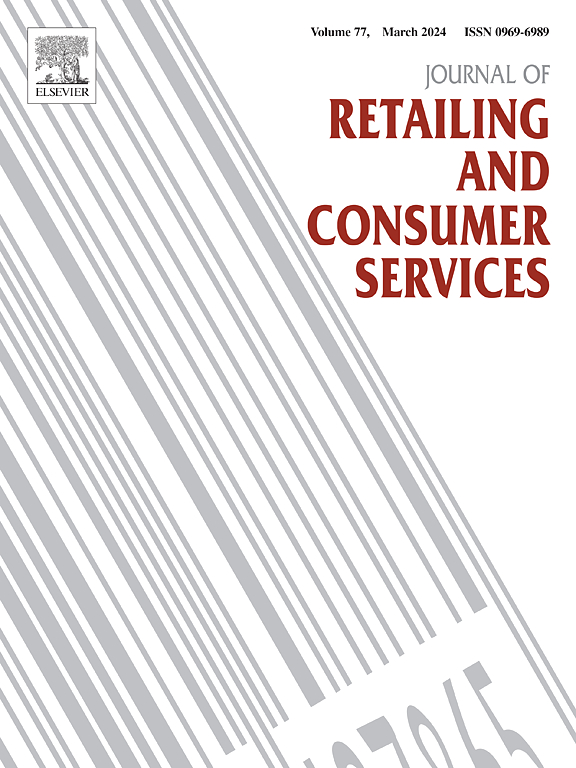Identifying targeted needs from online marketer- and user-generated data
IF 11
1区 管理学
Q1 BUSINESS
Journal of Retailing and Consumer Services
Pub Date : 2025-01-28
DOI:10.1016/j.jretconser.2025.104245
引用次数: 0
Abstract
On e-retailing sites, marketer-generated content (MGC), user-generated content (UGC), and potential user-generated content (PUGC) are constantly conveying their needs. Identifying and clustering these needs, especially targeted needs, helps implement differentiated market strategies, improves the helpfulness of user's review content, and enhances potential user's purchase experiences. If so, then, how to identify diverse needs and find out where they are targeted (lower/higher). Based on Maslow's hierarchy of needs theory, the authors propose a need hierarchy framework to explore these questions. We utilize the datasets from two experiential products on Amazon.com and combine text mining methods with regression analyses to identify and cluster the targeted needs of online-generated content. The results show that the needs conveyed by MGC, UGC and PUGC are hierarchical and targeted, and the targeted needs are mapped to higher levels. Furthermore, we also find that the needs conveyed by PUGC are influenced by and aligned with needs of UGC. The findings reveal the deeper value of online-generated content for identifying needs, and provide a highlight for studying needs of Maslow's hierarchy of needs theory in the new field of e-commerce. Meanwhile, the results obtain the new ideas for enhancing the online interaction experiences of all the stakeholders.
从在线营销人员和用户生成的数据中确定目标需求
在电子零售网站上,营销人员生成的内容(MGC)、用户生成的内容(UGC)和潜在用户生成的内容(PUGC)不断地传达着他们的需求。识别并聚类这些需求,特别是有针对性的需求,有助于实施差异化的市场策略,提高用户评论内容的有用性,增强潜在用户的购买体验。如果是,那么,如何识别不同的需求,并找出他们的目标(低/高)。基于马斯洛的需求层次理论,作者提出了一个需求层次框架来探讨这些问题。我们利用亚马逊网站上两个体验式产品的数据集,将文本挖掘方法与回归分析相结合,以识别和聚类在线生成内容的目标需求。结果表明,MGC、UGC和PUGC所传达的需求具有层次性和针对性,并且有针对性的需求映射到更高的层次。此外,我们还发现,PUGC传达的需求受到UGC需求的影响,并与UGC需求保持一致。这一发现揭示了网络生成内容在识别需求方面的深层价值,并为马斯洛需求层次理论在电子商务新领域的需求研究提供了亮点。同时,研究结果也为提升各利益相关者的在线互动体验提供了新的思路。
本文章由计算机程序翻译,如有差异,请以英文原文为准。
求助全文
约1分钟内获得全文
求助全文
来源期刊
CiteScore
20.40
自引率
14.40%
发文量
340
审稿时长
20 days
期刊介绍:
The Journal of Retailing and Consumer Services is a prominent publication that serves as a platform for international and interdisciplinary research and discussions in the constantly evolving fields of retailing and services studies. With a specific emphasis on consumer behavior and policy and managerial decisions, the journal aims to foster contributions from academics encompassing diverse disciplines. The primary areas covered by the journal are:
Retailing and the sale of goods
The provision of consumer services, including transportation, tourism, and leisure.

 求助内容:
求助内容: 应助结果提醒方式:
应助结果提醒方式:


